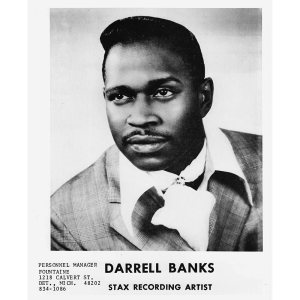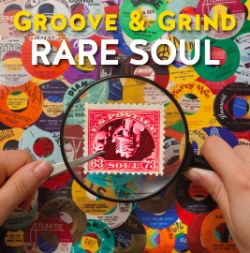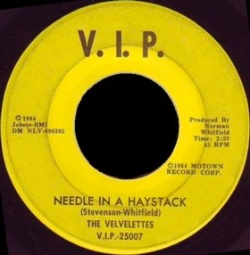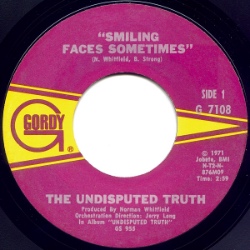 After nine years and well over 400 columns, I’ve decided to change Soul Serenade from a weekly to an occasional column. Obviously, there are more than enough classic soul records to fuel a column like this for a lifetime but the truth is that while the column’s title mentions a specific song what I’ve really been doing is telling the stories of the artists behind the songs. And while many artists had multiple hits, how many times can you tell the same story? Are there artists who I’ve never covered? Of course. The 8th Day is one such group and I’ll certainly find more. But the fact is they’re harder to come by on a weekly basis. I hope you’ll continue to join me on this journey albeit on a bit more infrequent basis.
After nine years and well over 400 columns, I’ve decided to change Soul Serenade from a weekly to an occasional column. Obviously, there are more than enough classic soul records to fuel a column like this for a lifetime but the truth is that while the column’s title mentions a specific song what I’ve really been doing is telling the stories of the artists behind the songs. And while many artists had multiple hits, how many times can you tell the same story? Are there artists who I’ve never covered? Of course. The 8th Day is one such group and I’ll certainly find more. But the fact is they’re harder to come by on a weekly basis. I hope you’ll continue to join me on this journey albeit on a bit more infrequent basis.
In 1967, the songwriting and production team of Brian Holland, Lamont Dozier, and Eddie Holland left Motown in an acrimonious dispute with Motown owner Berry Gordy, Jr. The trio formed their own family of record labels that included the Hotwax, Music Merchant, and Invictus imprints. The roster of these labels was mostly made up of groups that were assembled for the occasion. They were either supergroups or lineups that were pieced together for a specific record. Often the members of the groups didn’t even know each other or hadn’t worked together before being called on to record for one of the labels.
The story of the 8th Day begins with another group that was recording for Holland-Dozier-Holland, 100 Proof (Aged in Soul). 100 Proof itself had been assembled by Holland-Dozier-Holland and the lineup included Steve Mancha, Eddie Holiday, and Joe Stubbs (brother of Levi Stubbs). The group had scored an R&B hit with “Too Many Cooks Spoil the Soup” but then scored really big with a crossover smash called “Somebody’s Been Sleeping In My Bed” which reached #8 on the pop chart and sold a million copies of the Hotwax release. The label decided it would be a good idea to release a 100 Proof album to capitalize on the success of the single.

“She’s Not Just Another Woman” was a cut on the album and anyone with ears could tell that it was a hit. The song was written by Holland-Dozier-Holland but because of their ongoing dispute with Gordy, it was credited to C. Wilson and Ronald Dunbar. DJs started playing the track off the album. The problem was that “Somebody’s Been Sleeping” was still rolling up the charts and the label didn’t want anything, such as a new single by the same group, to get in the way. That’s where the 8th Day came in. It was simply a matter of changing the group’s name on the label of the single and releasing it on Invictus instead of Hotwax. That is 100 Proof’s Steve Mancha singing lead on “She Not Just Another Woman.” Sure enough, it was a hit, reaching #11 on the pop chart in 1971.
There was one little problem: there was no 8th Day. When the second 8th Day single, “You Got to Crawl (Before You Walk)” began to find some chart success, that problem had to be resolved, and quickly. Holland-Dozier-Holland did what they had done so well before and simply assembled a group for the occasion. The lineup included Melvin Davis, Tony Newsome, Lyman Woodard, Larry Hutchison, Ron Bykowski, Michael Anthony, Bruce Nazarian, Jerry Paul, Lynn Harter, Carol Stallings, and Anita Sherman. Now that there was an actual band, 8th Day recorded two more singles for Invictus but while “Eeny-Meeny-Miny-Mo (Three’s a Crowd)” and “If I Could See the Light” both reached the R&B Top 30, it wasn’t enough to keep the band together.
Holland-Dozier-Holland are often credited for their brilliant songwriting and production but it seems that they were also pretty adept at assembling talent and providing songs for their put-together groups to take up the charts.

 But Baker didn’t let racism stop her. She continued releasing hits like “Play It Fair” and “Bop-Ting-A-Ling” and made an appearance on the Ed Sullivan show in 1955. As rock and roll began to eclipse R&B, Baker adapted again, releasing rock and roll-styled hits like “Jim Dandy,” “Jim Dandy Got Married,” and “Humpty Dumpty Heart.” Her greatest success, however, came in 1958 with an epic single “I Cried a Tear.” Baker’s string of hits continued into the 1960s with songs like “So High, So Low,” “Saved,” and “See See Rider.” But the river of time kept flowing and the rise of Motown and the appearance of the Beatles on these shores relegated artists like Baker to “oldies” status. By 1965, Baker had decamped from Atlantic and landed at Brunswick records. She had a couple of small hits for the label, “Think Twice,” and “Wrapped, Tied, and Tangled.”
But Baker didn’t let racism stop her. She continued releasing hits like “Play It Fair” and “Bop-Ting-A-Ling” and made an appearance on the Ed Sullivan show in 1955. As rock and roll began to eclipse R&B, Baker adapted again, releasing rock and roll-styled hits like “Jim Dandy,” “Jim Dandy Got Married,” and “Humpty Dumpty Heart.” Her greatest success, however, came in 1958 with an epic single “I Cried a Tear.” Baker’s string of hits continued into the 1960s with songs like “So High, So Low,” “Saved,” and “See See Rider.” But the river of time kept flowing and the rise of Motown and the appearance of the Beatles on these shores relegated artists like Baker to “oldies” status. By 1965, Baker had decamped from Atlantic and landed at Brunswick records. She had a couple of small hits for the label, “Think Twice,” and “Wrapped, Tied, and Tangled.”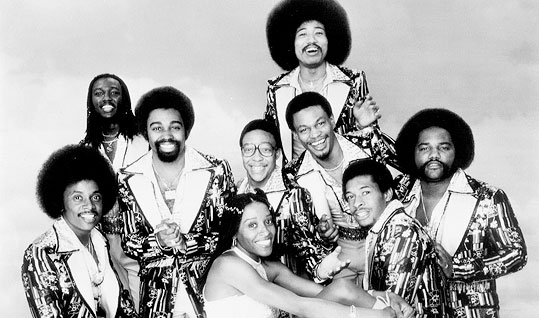
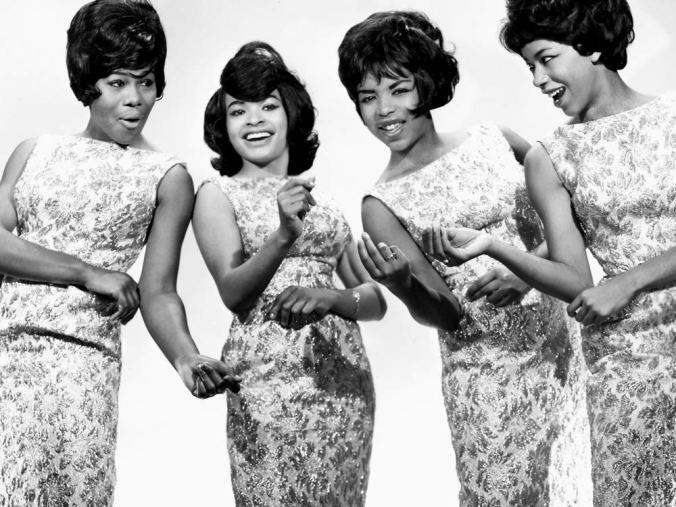 One year ago in this column, I featured Ruby and the Romantics and their 1963 smash hit “Our Day Will Come.” The record was so big that it cemented the group’s legacy all on its own. But that wasn’t the end of the Ruby and the Romantics output. They were the first to record two other songs that, while they were moderately-sized hits for Ruby and the Romantics, they were even bigger hits for the artists who covered them.
One year ago in this column, I featured Ruby and the Romantics and their 1963 smash hit “Our Day Will Come.” The record was so big that it cemented the group’s legacy all on its own. But that wasn’t the end of the Ruby and the Romantics output. They were the first to record two other songs that, while they were moderately-sized hits for Ruby and the Romantics, they were even bigger hits for the artists who covered them.
 Ever since I decided to make “I’m Gonna Make You Love Me” the focus of this week’s column I’ve been wracking my brain to think of another instance when the full lineups of two huge groups collaborated on a hit record. Yes, there have been supergroups like Cream and Crosby, Stills, Nash & Young made up of former members of various bands, but in this instance, we’re talking about the all the members of two groups who were at the top of their game getting together. If you can think of another example, please let me know in the comments.
Ever since I decided to make “I’m Gonna Make You Love Me” the focus of this week’s column I’ve been wracking my brain to think of another instance when the full lineups of two huge groups collaborated on a hit record. Yes, there have been supergroups like Cream and Crosby, Stills, Nash & Young made up of former members of various bands, but in this instance, we’re talking about the all the members of two groups who were at the top of their game getting together. If you can think of another example, please let me know in the comments.
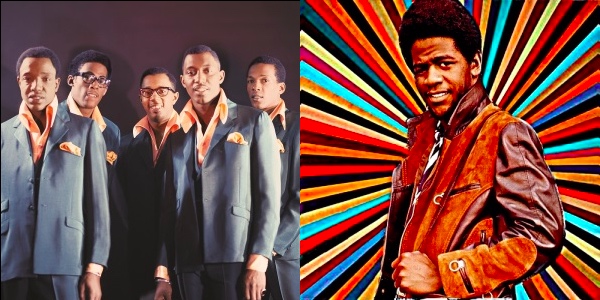

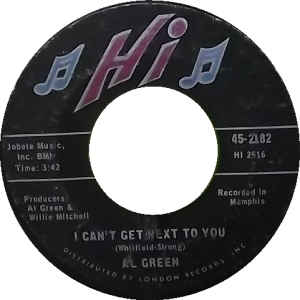
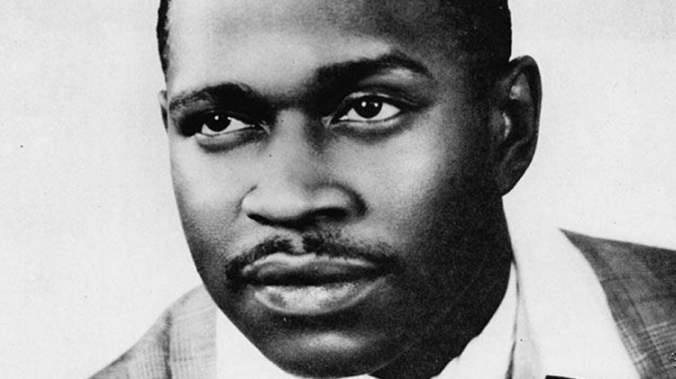 When you think of great singers whose lives and careers were cut short when they were on the wrong end of a gun, Sam Cooke is the first name that comes to mind. But there was another great soul singer who lost his life when he was gunned down, and that was Darrell Banks.
When you think of great singers whose lives and careers were cut short when they were on the wrong end of a gun, Sam Cooke is the first name that comes to mind. But there was another great soul singer who lost his life when he was gunned down, and that was Darrell Banks.